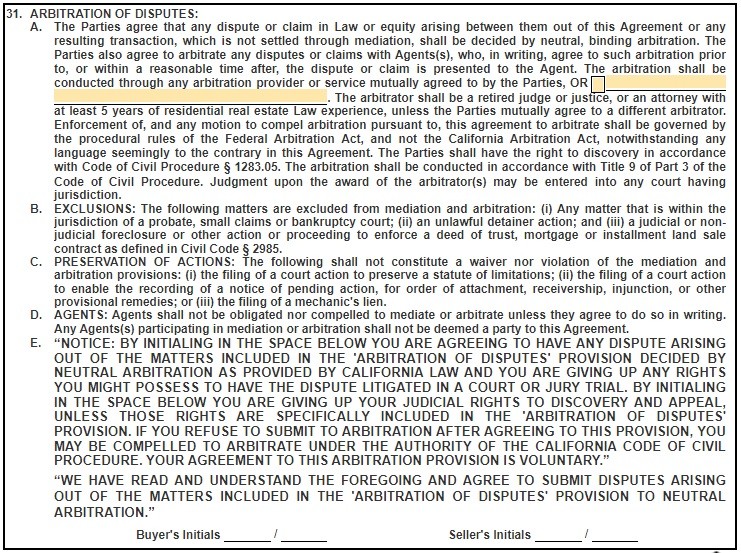
What are liquidated damages?
A liquidated damages provision in an agreement provides for a buyer to owe a specified amount of money to a seller in the event the buyer breaches the contract. For example, if a deposit of $5,000 is placed in escrow, and the liquidated damages provision is initialed by both buyer and seller, and then the buyer breaches the contract, the seller will be entitled to the $5,000 as liquidated damages.
It does not matter whether the seller has incurred an actual loss that is more or less than $5,000.The purpose of the provision is to set the amount of damages in advance so that proof of actual loss is not necessary.
Does a liquidated damages provision automatically entitle the seller to the buyer’s deposit if a transaction does not close?
Generally, no. A liquidated damages provision only determines the amount of money a seller canrecover from a buyer, and then only if the seller can prove the buyer breached the contract. A buyer may fail to close a transaction for a variety of acceptable reasons (e.g., where there is a financing contingency and the buyer could not reasonably obtain financing). To recover liquidated damages, the seller generally must prove in court or arbitration that the buyer’s failure to close the transaction was a breach.
May the parties agree, in advance, that the buyer will pay a non-refundable deposit in the event of breach?
Generally, no. The law does not permit contracts to impose penalties or forfeitures, including a nonrefundable deposit, for breach absent gross negligence or willful or fraudulent breach.. In general, judges are reluctant to enforce penalty or forfeiture provisions where they are inconsistent with the likely actual damages incurred. Additionally, the RPA-CA’s language does not permit such clauses. Under paragraph 21A of the RPACA, any added clause specifying a remedy for a buyer breach, such as a non-refundable deposit or a forfeiture of the deposit, will be invalid if the added clause does not independently comply with the Civil Code’s liquidated damages rules.
If a buyer makes more than one deposit pursuant to a purchase contract, will a liquidated damages clause entitle a seller to the buyer’s combined deposits if the buyer defaults?
Not necessarily. If the real property being sold is a dwelling containing not more than four residential units and the buyer intends to occupy one as a residence at the time the purchase contract is made, then each payment that is to be part of the liquidated damages to the seller must be separately signed or initialed in a properly formatted liquidated damages clause. In addition, if the total of all such deposits exceeds 3% of the purchase price, the seller could be limited to 3% even if more is deposited. The C.A.R. form Increased Deposit/Liquidated Damages Addendum (C.A.R. Form RID) should be signed at the time an additional deposit is made during escrow in order to make any additional payments part of the liquidated damages.
For the Liquidated Damages clause to be in effect, both buyer and seller must initial the paragraph. Neither is required to do so.


